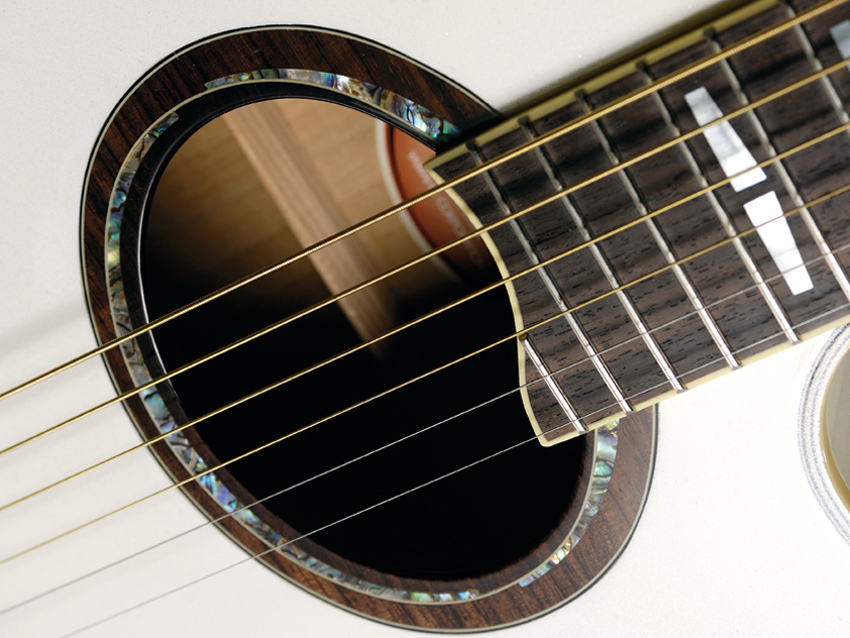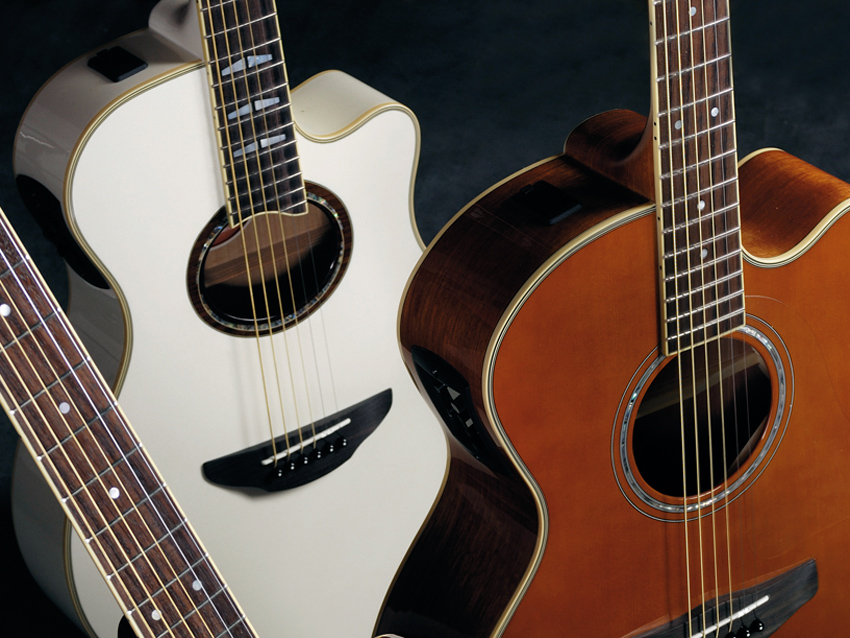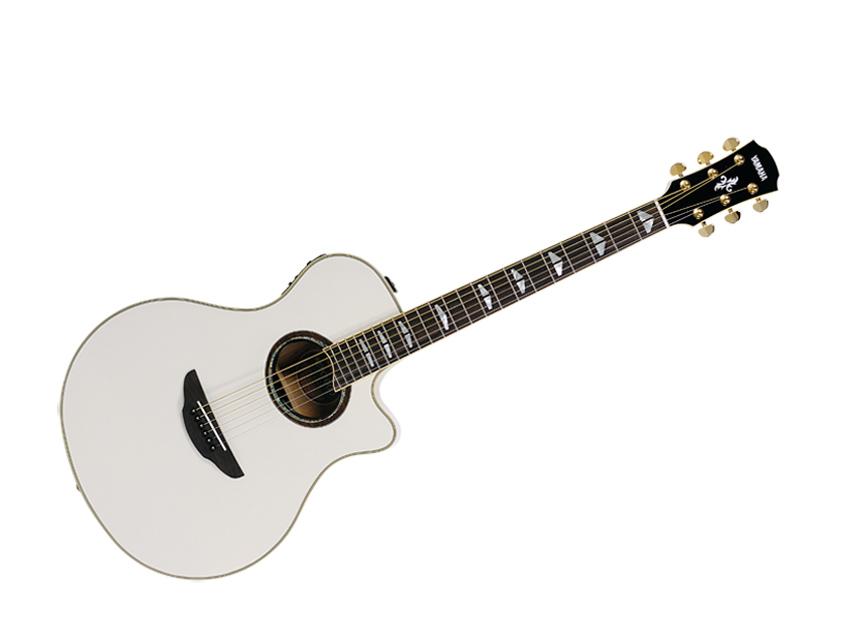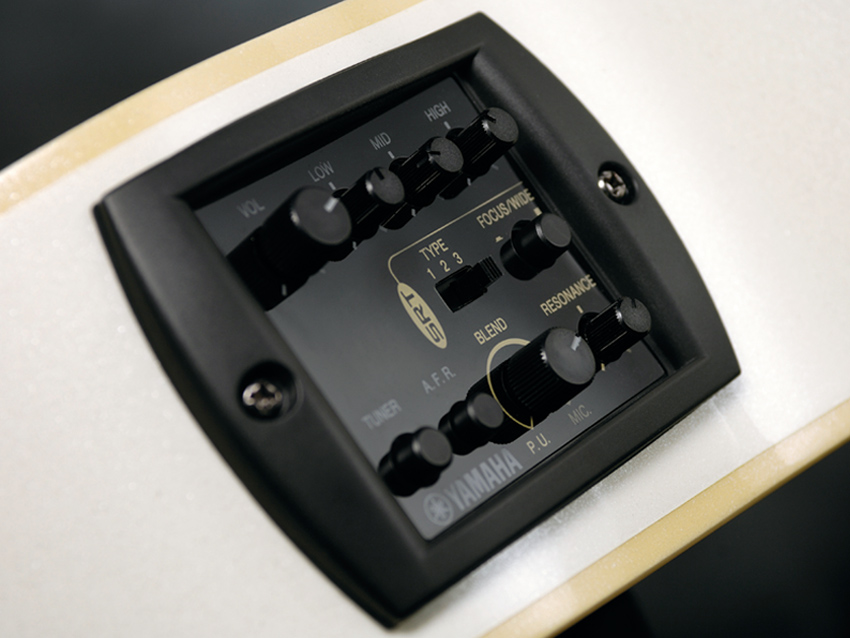MusicRadar Verdict
This sets a value challenge for other guitar makers offering mic-imaging technology
Pros
- +
Some excellent piezo-cum-modelling sounds. Wide string spacing.
Cons
- -
More gain wouldn't go amiss.
MusicRadar's got your back

Yamaha APX1000

Yamaha APX1000, CPX700II and APX500II

Yamaha APX1000

Yamaha APX1000
Since their introduction nearly 25 years ago, Yamaha's APX stage electros have undergone periodical revamps. 2011 sees another stage in the range's evolution, embracing not only cosmetic updates and new colours, but also revised electronics.
The new APX1000 model succeeds the ART-powered APX900 and incorporates SRT (Studio Response Technology) mic-modelling similar to that first used on the APX1200.
"The guitar's SRT aspects knock the socks off onboard real-mic blender systems."
One change is the replacement of the near-ubiquitous PP3 9V battery with two 1.5V AAs. Within the circuitry, Yamaha has somehow managed to boost the batteries' voltage to 11V to give, it says, a wider dynamic range, more stable operation and reduced distortion, even when the batteries are running low.
In short, the claim is better tone for longer: no bad thing at all. Presumably a spin-off benefit is that rechargeables can be used - as long as they're alkaline - so you won't need to keep forking out for batteries.
The APX1000 also receives a new piezo under-saddle pickup. Rather than a single, narrow ribbon, this comprises six individual elements on a wider strip that, says Yamaha, offers improved clarity, definition and balance.
Happily, the APX1000's tuner mutes its system, and can also be recalibrated in 1Hz increments between 438Hz and 445Hz: very handy for accompanying off-concert-pitch instruments.
As for cosmetics - extended colour choice aside - the main changes are a black-faced translucent headstock, and truss rod access via the soundhole, where previously one or two models had theirs on the peghead.
Yamaha has also replaced the formerly raised soundhole ring with inlaid rosewood/abalone rosettes.
The general aesthetic of the APX1000 gives a decent amount of bling for your buck. As well as the mahogany/abalone rosette inlay, there's extra cream-edged purfling plies around the solid spruce top, and SG3000-style markers up the fingerboard that finishes with a 23rd part-fret flourish, while the tuners are gold not chrome.
Not that you'd know it through the guitar's immaculate metallic pearl white finish, but the back and sides are stated as being flamed maple. You have to wonder whether Yamaha actually bothers to use figured outer veneers on anything but the natural version.
The APX1000 has a 650mm scale length and D-profile and, joy of joys, the bridge string spacing is a full 55mm, helping make the 1000 an all-round player.
We've dealt with the SRT preamp's tuner before - it does what it needs to - and its three-band EQ and pickup/mic blend controls can each be selected, with the option of close- or far-mic'ing. This is then linked to a resonance rotary, which subtly adds lower-end warmth and body to the images.
A killer feature is AFR (Auto Feedback Reduction), which involves up to five search-and-destroy filters. Ifa single press of the button doesn't do the job, the other filters can be progressively activated until feedback is completely eliminated. The facility is extremely effective. Note also that the AFR button doubles up as the means of recalibrating the tuner.
Sounds
Predictably, the guitar's maple element contributes to a bright, taut tone, and projection is fairly vigorous. The unplugged sound is up to par for the body size, with reasonable dynamics and sustain, a smooth, fluid tone, commendable poise and balance. It gives a degree of lower-end warmth and sweet-edged highs.
Powered up, with the new undersaddle pickup admirably taking care of the piezo side of things, the guitar's SRT aspects knock the socks off onboard real-mic blender systems.
The images remain musical and convincingly usable up to higher ratios of mic-to-pickup, and it's only when running near full-bore mic that undesirably artificial ambiences creep in. A 50:50 mix or thereabouts produces very satisfying results.
Which image will be preferred is entirely a personal choice, since the differences between each - whether simulating close or far mic'ing - are subtle.
Two improvements compared to early SRT systems appear to have been made. Firstly, a faint, low-frequency rumble that could be heard when the AFR was switched in is no longer audible; and secondly, the preamp delivers a bit more gain than it previously did, although it's still not a belter in this respect.
Yamaha has unequivocally moved things along nicely with the APX1000. It's a definite hit, not just as a fingerstyle-accommodating, stage all-rounder, but also for its high-quality powered versatility at a price that other manufacturers offering mic-imaging blender systems have yet to achieve.
“Built from the same sacred stash of NOS silicon transistors and germanium diodes, giving it the soul – and snarl – of the original”: An octave-fuzz cult classic returns as Jam Pedals resurrects the Octaurus
What’s the buzz? Meet Yellowjacket, Cherry Audio's recreation of EDP’s trend-setting Wasp from 1978
“A fabulous trip through all eight songs by 24 wonderful artists and remixers... way beyond anything I could have hoped for”: Robert Smith announces new Cure remix album









